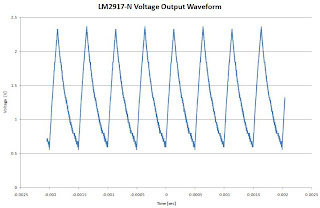It's been a long time since I had any time to sit down and do anything else other than read about ship airwakes, plot ship airwake CFD data, then read more reports on bluff body aerodynamics. Progress on the dashboard has slowed considerably, to the point that hardly anything has happened since the last update other than I drilled some holes in a project box to fit the various electronic boards.
In other news since work on the dashboard has ground to a halt because I am stuck at uni during the week and at my girlfriends during the weekends I have been taking an interest in resuming work on pulse detonation engines or PDE's. I amassed a fair bit of research on these engines with the idea of using a small two-stroke piston engine as a valve, somewhat similar to this patent, dated 2005 which is incidentally around the time when I was doing my research and struggling to use rubbish TurboCAD program to develop a some 3D models.
These engines are similar to pulse jets in the fact that combustion takes place intermittently and superficially they look alike but in the pulse detonation engine combustion takes place at high speeds. So high in fact that it produces a supersonic pressure wave that combusts the air/fuel charge almost instantaneously. Although in pulse jets and car engines the combustion process might seem to occur very quickly, it does in fact undergo a process called deflagration where fuel combustion propagates subsonically. Occasionally car engines and pulse jets can transition from deflagration to detonation and when this occurs a great deal of damage often occurs.
Anyway I abandoned the project quite early on, despite the relatively easy fabrication such an engine will require, the high precision required to control the engine made it a non-starter as I had no experience or understanding of control systems and the accompanying mathematics. Roll on nearly ten years and I find myself looking at another heap of reports and running some simple CFD simulations in between my PhD work and thinking this is a viable project. I should finish the Ardour dashboard too, but all my extra curricular activities will probably be on hold until I move house in a couple of months time... But I can still throw some time into designing the engine.
I've already decided that instead of using a valved PDE, my design will be valveless. I see point in going down the valved route as this requires high pressure fuel and oxidiser feeds, careful valve and ignition timing and would hardly make a lightweight, flight capable engine. The valveless route means I can use ambient air for the oxidiser, remove some complexity and reduce overall engine mass and cost, which is makes it attractive to a poor student like me. It's not all advantages though, it has a drawback. A big one. Without mechanical valves there is nothing preventing air or more specifically hot combustion gas from escaping from the engine without contributing to thrust. But all is not lost as you'll see soon enough, but more on that later, I still have to wait on some CFD results before I can move forward.





